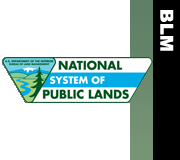|
Print Page | ||
Grazing
Livestock grazing is managed in accordance with the principles of multiple use and sustained yield embodied in the Federal Land Policy and Management Act (1976) and the Taylor Grazing Act (1934). BLM's specific objectives and procedures for managing livestock grazing are contained in the agency's regulations for administering livestock grazing. BLM's grazing regulations were revised significantly in 1995 to ensure that livestock grazing is conducted in a manner that will sustain or improve the fundamental ecological health of public rangelands. Under the revised grazing regulations, each BLM state office worked with its citizen Resource Advisory Councils to develop state-specific Standards for Rangeland Health and Guidelines for Managing Livestock Grazing. Idaho BLM's Standards and Guidelines were completed in 1997 and established eight ecological objectives that are to be achieved on all BLM-managed rangelands in Idaho. Idaho BLM is currently conducting assessments of all grazing allotment to determine if Idaho's Standards for Rangeland Health are being achieved. Each Idaho BLM field office has established a schedule for completing the assessments by 2009. If an assessment determines that an area is not meeting the standards for rangeland health, the field office prepares an analysis that identifies opportunities and methods to adjust grazing management, and initiates the changes needed to make significant progress in improving rangeland health. BLM Fact Sheet: Investing in Range Improvements on Public Land |
|||







 Livestock grazing is a major activity on Idaho's public lands. Grazing permittees purchase Animal Unit Months (AUMs) of livestock forage. An AUM is the amount of forage needed to sustain one cow and calf, five sheep, two burros, or one horse for one month. About 800,000 AUMs of livestock forage are authorized annually.
Livestock grazing is a major activity on Idaho's public lands. Grazing permittees purchase Animal Unit Months (AUMs) of livestock forage. An AUM is the amount of forage needed to sustain one cow and calf, five sheep, two burros, or one horse for one month. About 800,000 AUMs of livestock forage are authorized annually.